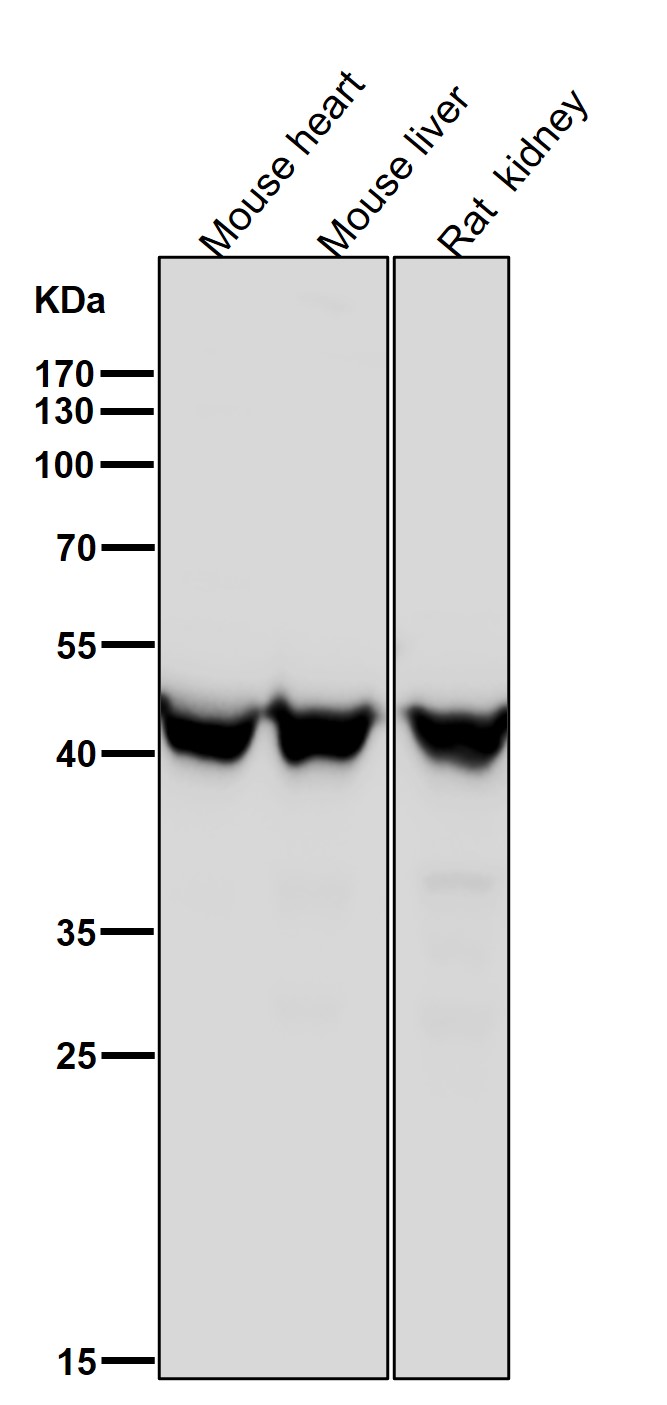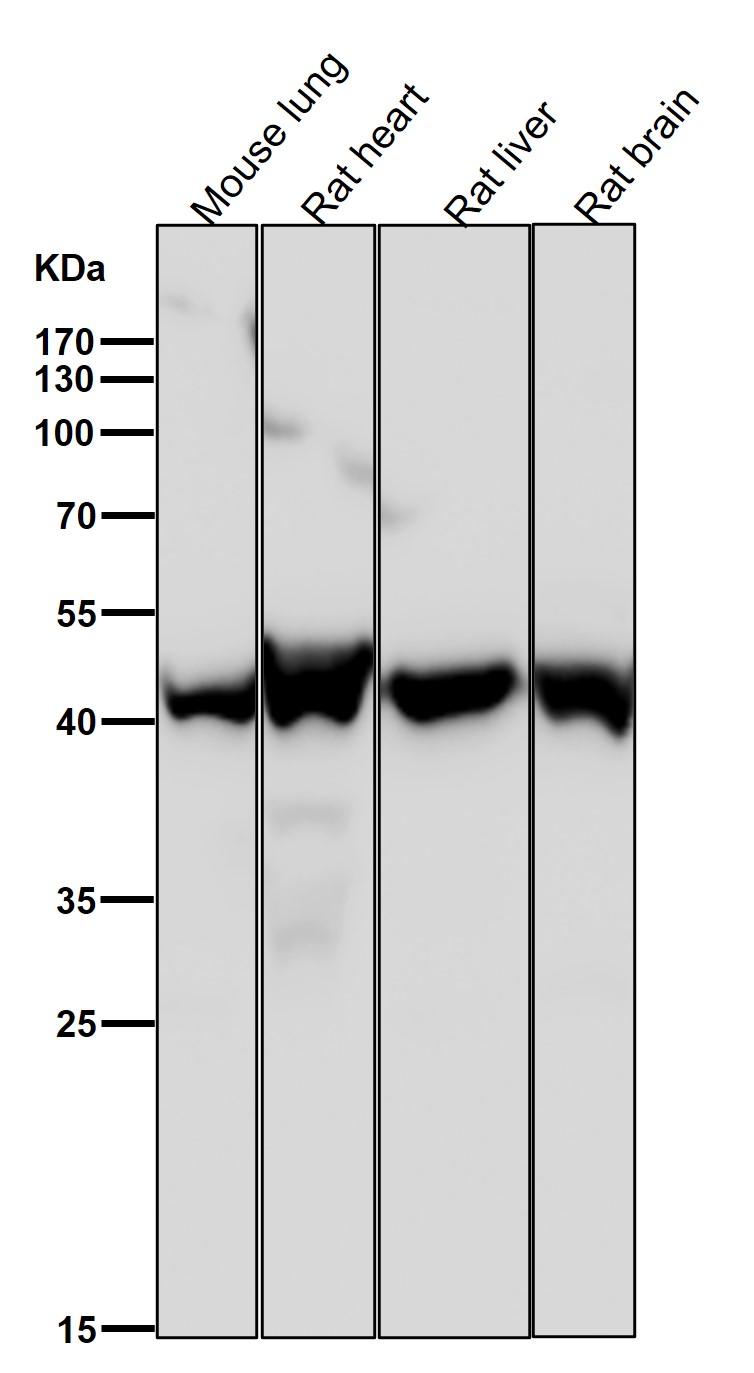


| WB | 咨询技术 | Human,Mouse,Rat |
| IF | 咨询技术 | Human,Mouse,Rat |
| IHC | 咨询技术 | Human,Mouse,Rat |
| ICC | 技术咨询 | Human,Mouse,Rat |
| FCM | 1/20-1/100 | Human,Mouse,Rat |
| Elisa | 咨询技术 | Human,Mouse,Rat |
| Aliases | Elf3; EPR1; ERT; ESE-1; ESX; jen;;ELF3 |
| WB Predicted band size | Calculated MW: 41 kDa ; Observed MW: 47 kDa |
| Host/Isotype | Rabbit IgG |
| Antibody Type | Primary antibody |
| Storage | Store at 4°C short term. Aliquot and store at -20°C long term. Avoid freeze/thaw cycles. |
| Species Reactivity | Human,Mouse,Rat |
| Immunogen | A synthesized peptide derived from human ELF3 |
| Formulation | Purified antibody in PBS with 0.05% sodium azide,0.05% BSA and 50% glycerol. |
+ +
以下是关于ESE1抗体的3篇参考文献及其摘要内容的简要列举:
---
1. **文献名称**:*ESE1/ELF3 regulates the expression of ITGA2 in colorectal cancer*
**作者**:Li Y, et al.
**摘要**:该研究使用抗ESE1抗体通过免疫组化和Western blot分析结直肠癌组织中ESE1蛋白的表达,发现其通过调控ITGA2基因促进肿瘤侵袭,证实抗体在检测肿瘤特异性表达中的应用。
---
2. **文献名称**:*Role of ESE1 in epithelial inflammation and NF-κB activation*
**作者**:Wang H, et al.
**摘要**:研究利用ESE1抗体进行ChIP-seq和免疫荧光实验,揭示ESE1在炎症反应中与NF-κB通路相互作用,抗体用于定位其核内活性及靶基因结合机制。
---
3. **文献名称**:*Antibody validation for ESE1 in prostate cancer progression*
**作者**:Smith J, et al.
**摘要**:通过抗体验证(敲除/过表达模型)评估ESE1抗体的特异性,证明其在前列腺癌中高表达并与患者预后相关,强调抗体在临床样本检测中的可靠性。
---
注:以上文献信息为示例,实际引用需根据具体论文核实。建议通过PubMed或Google Scholar以关键词“ESE1 antibody”或“ELF3 antibody”检索最新研究。
×